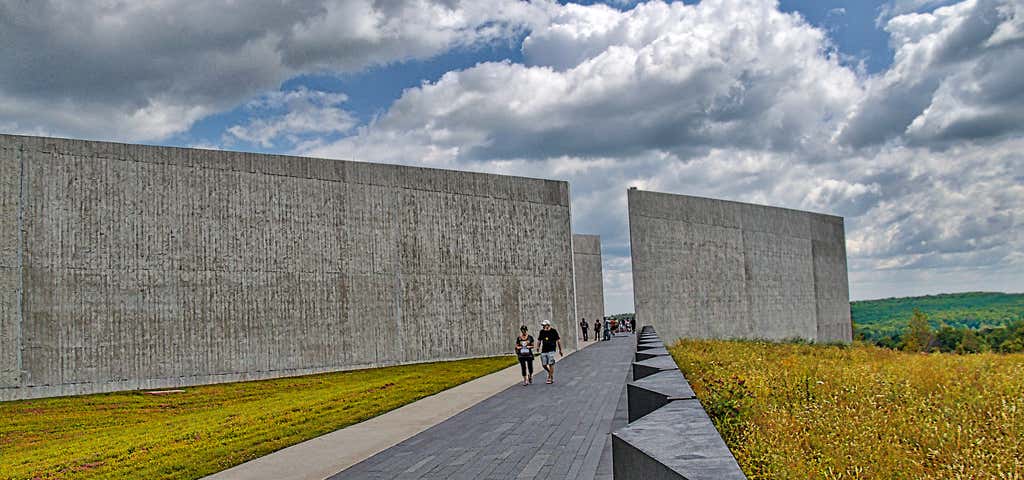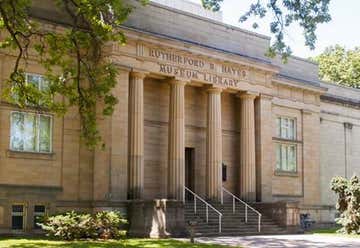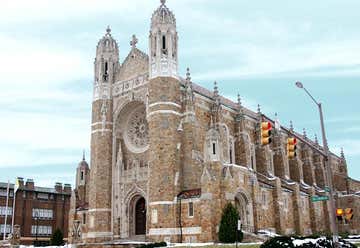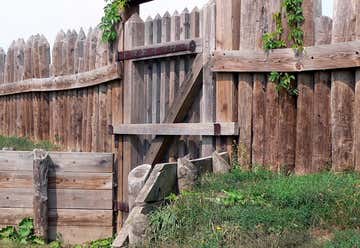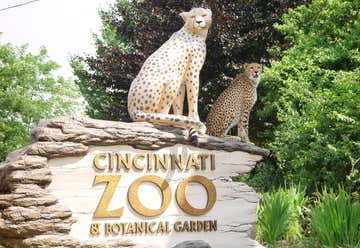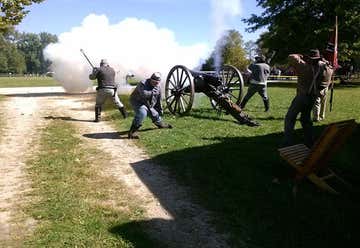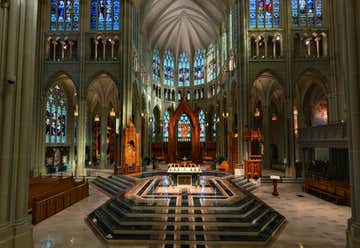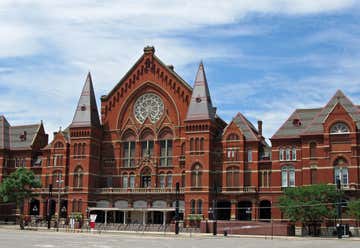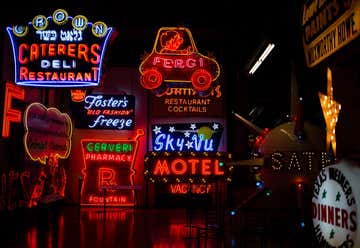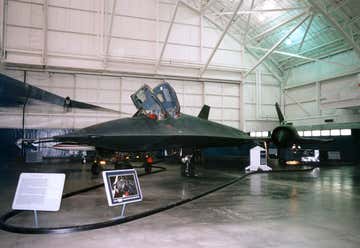127 West Maple Avenue, Allendale, New Jersey, United States
Eclectic global small plates & craft cocktails are offered in a former railway power station.
1111 Lakeside Avenue E, Cleveland, OH, US
“hundreds of hands-on exhibits” Great Lakes Science Center is one of the nation’s leading science and technology centers, featuring hundreds of hands-on exhibits, the NASA Glenn Visitor Center, OMNIMAX Theater and the Steamship William G. Mather. Get hands-on, minds-on family fun at Great Lakes Science Center! See and touch hundreds of hands-on exhibits, visit the NASA Glenn Visitor Center, immerse yourself in our six-story Cleveland Clinic OMNIMAX® Theater, climb aboard a historic Great Lakes freighter and marvel at science demonstrations performed right before your eyes. Experience an amusement park for the mind!
“tour the ship that built CLeveland” Discover what life onboard a working Great Lakes freighter was like as you tour this restored 618-foot historic flagship. Explore the 1925-built Mather from stem to stern and see its huge cargo holds, brass and oak pilot house, elegant guest quarters and four-story engine room. Walk the decks and marvel at the “engineering firsts” that helped transform Northeast Ohio into a great industrial center. Experience the golden era of steamboats on one of the best!
“sunk more than a dozen enemy ships” U.S.S. Cod (SS 224), named after the world's most important food fish, is a World War II era GATO class fleet submarine. The 312-ft, (95-m) 1,525-ton submarine began her life on July 21, 1942 when her keel was laid at the Electric Boat Co., Groton, Connecticut. Cod was launched on March 21, 1943 under the sponsorship of Mrs. Grace M. Mahoney, wife of a veteran shipyard employee, and was placed in commission on June 21, 1943, under the command of CDR James C. Dempsey, USN. In 1959 she was towed through the newly opened St. Lawrence Seaway to serve as a naval reserve training vessel in Cleveland, Ohio. The veteran submarine was an instant hit with school children who visited her on field trips. In 1971, no longer useful as a training ship, Cod was stricken from the register of Navy ships.A handful of Clevelanders formed the Cleveland Coordinating Committee to Save Cod, Inc., to preserve her as a memorial on the city's lakefront. In January, 1976, the Navy gave guardianship of the submarine to the group. Codbegan her career as a floating memorial in May of 1976 when she opened for public tours and quickly established herself as a popular tourist attraction. In 1986, the U.S. Department of the Interior designated Cod a National Historic Landmark.Today, Cod is one of the finest restored submarines on display and is the only U.S. submarine that has not had stairways and doors cut into her pressure hull for public access. Visitors to this proud ship use the same vertical ladders and hatches that were used by her crew. Cleveland can claim partial credit as Cod's birthplace, since the submarine's five massive diesel engines were built by General Motors' Cleveland Diesel plant on Cleveland's west side.Cod is credited with sinking more than 12 enemy vessels totalling more than 37,000 tons, and damaging another 36,000 tons of enemy shipping. All seven of her war patrols were considered successful and Cod was awarded seven battle stars.
The nation’s FIRST presidential library! Also includes our 19th president’s mansion, museum, Spiegel Grove estate, and burial site. All in one location!
“National Museum of the Great Lakes” Willis B Boyer is a lake freighter that served as a commercial vessel on the Great Lakes for much of the 20th Century, and as of 2013 is undergoing renovation as a museum ship in Toledo, Ohio. The steamship Willis B Boyer began life on 1 July 1911 in Detroit as SS Col James Schoonmaker. At the time of her launch she took the title of Queen of the Lakes which is given to the biggest ship on the Great Lakes. She became the flagship of the Shenango Furnace Company. She broke many cargo records for iron ore, grain and coal in her first year. She was powered by a triple expansion steam engine which was later replaced by a steam turbine in 1955. She sailed as part of the Shenango's fleet until 1969 when she was sold to the Interlake Steamship Co who chartered Col James Schoonmaker to the Republic Steel Corporation. After a three year charter to that company Interlake decided to sell her to the Cleveland Cliffs Iron Co. They operated the laker for 7 years in the iron trade until she was laid up in 1980 due to a downturn in the steel industry which she served. After sitting unwanted for 7 years, the city of Toledo decided to purchase her for use as a museum.
Our Lady, Queen of the Most Holy Rosary Cathedral is a Roman Catholic church located at 2535 Collingwood Boulevard in the Old West End of Toledo, Ohio. The cathedral is the mother church of the 124 parishes in the Roman Catholic Diocese of Toledo. This cathedral is unique architecturally in that it was designed in the Spanish Plateresque style. It was designed with Toledo's Sister City, Toledo, Spain in mind. Finished in 1931, it was built in the spirit of the great European cathedrals of the Middle Ages. The mosaic depicted of the cruxifiction above the Altar .
“hear muskets crack & cannons roar” Built in 1813 to defend Ohio during the War of 1812, Fort Meigs successfully withstood two sieges by a combined British, Canadian, and Native American force. Hear muskets crack and cannons roar as history comes to life around you. Fort Meigs hosts numerous reenactments and special events each season, each with its own unique theme. View our extensive photo galleries for images of past events at Fort Meigs and be sure to check out some of the many other historic sites our volunteers have visited, too.
Our Take Preemie hippos aside, the Cincinnati Zoo is the second-oldest in the country and is consistently voted one of America's best. Creatures from every corner of the animal kingdom are cared for here and serve to educate the public. The polar bears and manatees are personal favorites that shouldn't be missed. The Zoological Society of Cincinnati was founded in 1873 and officially opened its doors in 1875, making the Cincinnati Zoo & Botanical Garden the second oldest Zoo in the United States. The Zoo’s original animal collection was very small, originally consisting of just eight monkeys, two grizzly bears, three deer, six raccoons, two elk, a buffalo, a hyena, a tiger, an alligator, a circus elephant, and over four hundred birds, including a talking crow. The Zoo was founded on 65 acres in the middle of the city, and since then has acquired some of the surrounding blocks and several reserves in Cincinnati’s suburbs. Today you can feed giraffes, see gorillas, watch manatees, and more! The Zoo was designated as a National Historic Landmark in 1987 due to its significant architecture featured in the Elephant House, the Reptile House, and the Passenger Pigeon Memorial. The Zoo’s Reptile House is the oldest existing Zoo building in the country, dating from 1875. The Zoo has long been successful at captive breeding, starting with trumpeter swans and sea lions back in the 1880s. The Lindner Center for Conservation and Research of Endangered Wildlife (CREW) was founded in 1986 to strengthen the tradition. The research conducted here has made the Cincinnati Zoo an international leader in the protection and propagation of endangered animals and plants around the world.
“Best kept secret in Ohio” Caesar's Creek Pioneer Village is a historically recreated community in Caesar Creek State Park, located in Waynesville, Ohio, United States. The village was formed when historic buildings were moved here in order to save them from destruction from the creation of Caesars Creek Lake.
“An art & architectural monument” Building the Cathedral was the dream of the Most Reverend Camillus Paul Maes, third Bishop of the Diocese of Covington. The project began in 1894 and ended in 1915, incomplete. Though largely unfinished even today, the Cathedral is a monument which speaks of the faith and determination of the Bishop and the community. It is an art and architectural monument to be treasured for centuries by people everywhere. What Makes the Cathedral a Basilica? Traditionally, churches attained the title of basilica because of their antiquity, dignity, historical importance, or significance as centers of worship.
“One of the most beautiful concert theaters in the world” Music Hall, completed in 1878, is Cincinnati's premier classical music performance hall. It serves as the home for the Cincinnati Symphony Orchestra, Cincinnati Opera, May Festival Chorus, and the Cincinnati Pops Orchestra. In January 1975, it was recognized as a National Historic Landmark by the U.S. Department of the Interior. The building was designed with a dual purpose - to house musical activities in its central auditorium and industrial exhibitions in its side wings. It is located at 1241 Elm Street in Cincinnati, Ohio across from historic Washington Park in Over-the-Rhine, just minutes from the center of the downtown area. Music Hall was built over a pauper's cemetery, which has helped fuel its reputation as one of the most haunted places in America. The main hall, called the Springer Auditorium in honor of founding patron Reuben Springer, has 3,516 seats and ranks acoustically as one of the finest performance venues in the world. It serves as home for the Cincinnati Symphony Orchestra, the Cincinnati Opera and the May Festival Chorus. It is one of the largest permanent concert halls in the U.S, third only to the Metropolitan Opera House in New York City and DAR Constitution Hall in Washington, D.C. The crystal chandelier located in the main auditorium.In addition to the central auditorium, the facility includes:Music Hall Ballroom - accommodating up to 1,300 people, is the second largest meeting space in the city, encompassing nearly 20,000 square feet (1,900 m2). It is frequently used for large receptions, exhibitions, fashion shows, class reunions and breakfast, lunch and dinner gatherings. In October 1998, a $1.8 million renovation of the Ballroom was completed. In July 2007, organ rebuilder Ronald F. Wehmeier of Cincinnati announced the Mighty Wurlitzer theater organ that once graced the old Albee Theater in Cincinnati would be restored and installed in Music Hall’s Ballroom for a New Year’s Eve 2009 debut. Various employees of Music Hall have described experiencing strange events in the facility, while others say they've never experienced anything at all. In the 2005 documentary Music Hall: Cincinnati Finds Its Voice, Patricia K. Beggs, the CEO of the Cincinnati Opera, acknowledged, "Ghosts? Um, yes. Indeed, there are Music Hall ghosts." Erich Kunzel, late conductor for the Cincinnati Pops, once stated, "Sometimes when I was arranging, getting things together, I've worked here all night long. So I've met these people. They're not in the offices, but when you go out into the house they're there, they're upstairs. ... If you think I'm crazy just come here sometime at three o'clock in the morning. They're very friendly." Ghosts were first reported before Music Hall was built, after the ground was first excavated for an Exposition Hall elevator. It is said that when an elevator shaft was installed in 1988, bones of both children and adults were found under the building.
“100 years of history” The American Sign Museum in Cincinnati, Ohio, preserves, archives, and displays a vast collection of signs. The museum is also home to Neonworks, a neon sign fabrication shop where visitors can see tube bending, sign repair, and assembly.
“An amazing sculpture park in Ohio” Pyramid Hill is an outdoor museum focusing on monumental pieces of sculpture in an environment of meadows, forests, and various gardens. We also feature a 10,000 square foot Ancient Sculpture Museum displaying Egyptian, Greek, Roman and Etruscan sculpture thousands of years old. Dogs are welcome at Pyramid Hill as long as they remain leashed.
“home of National Museum of the United States Air Force” Wright-Patt is one of the U.S. Air Force's largest and most important installations. Located in Dayton, Ohio, it is the birthplace, home and future of aerospace. Wright-Patterson AFB is "one of the largest, most diverse, and organizationally complex bases in the Air Force" with a long history of flight test spanning from the Wright Brothers into the Space Age. It is the headquarters of the Air Force Materiel Command, one of the major commands of the Air Force. "Wright-Patt" (as the base is colloquially called) is also the location of a major USAF Medical Center (hospital), the Air Force Institute of Technology, and the National Museum of the United States Air Force, formerly known as the U.S. Air Force Museum.
